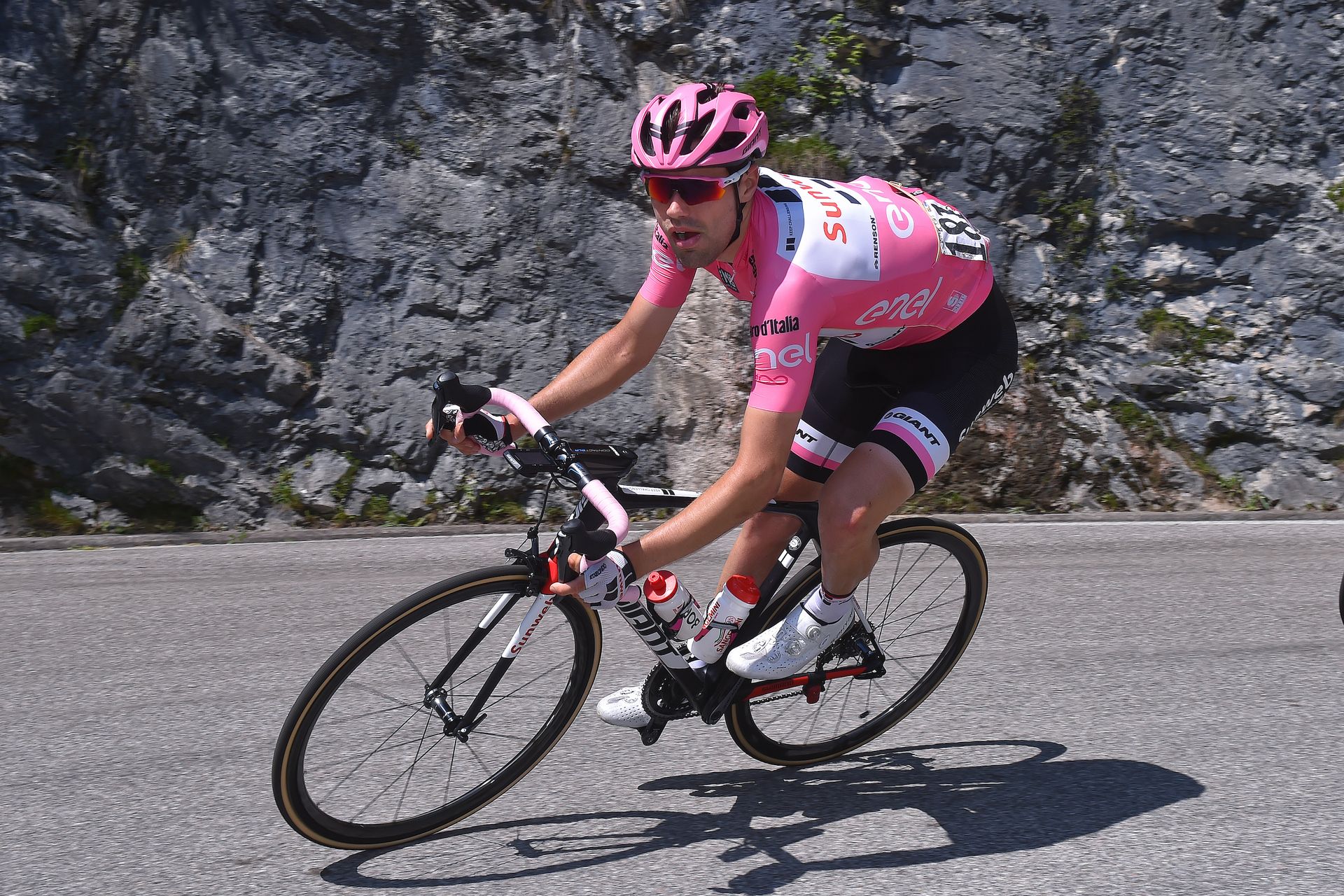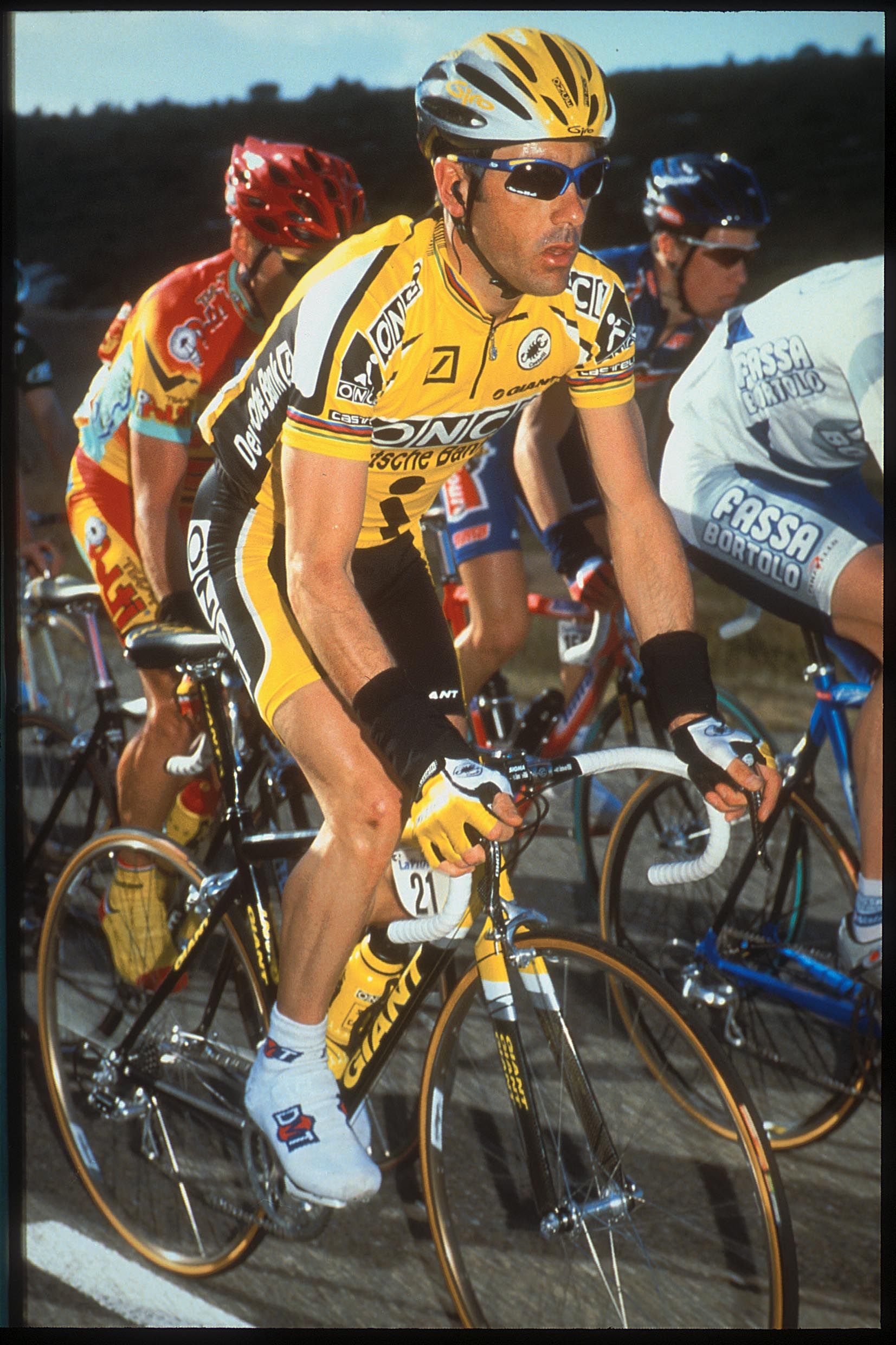With the new Large TCR launched this week, we thought it was time to look again on the historical past of the revolutionary bike.
This function was initially printed within the 29 December 2022 print version of Biking Weekly journal. Subscribe on-line and get the journal delivered to your door each week.
There are moments in design historical past when one thing is developed which modifications the face of know-how as we all know it. There are vehicles just like the Volkswagen Beetle or the Mini, and planes like Concorde or the Boeing 747, which stretched the boundaries of what these strategies of transport might be, taking issues on by years.
Bikes aren’t any totally different. Ever because the early days of bicycles, particularly as soon as they started to be raced, there have been design moments when an enormous change has occurred, and evolution has given option to revolution. There was the Legano Crew Bike ridden by Gino Bartali within the Forties, the primary to be fitted with a derailleur, which allowed riders to modify gears on the go. After this, there have been incremental modifications, with totally different supplies being employed, aluminium and carbon fibre being the most important variations, however bikes have been largely the identical form.
The basic straight-lined triangle of the body was the usual, with all street bikes trying very comparable. Actually, most bicycles seemed the identical, from the one utilized by your native postman to prime professionals.
Then, alongside got here Mike Burrows. The Norfolk designer, having spent years in cycle design’s hinterlands with monoblade forks, micro lo-pros and blobby monocoque frames, which have been all considered too eccentric for the conservative world of street biking, lastly acquired mainstream recognition after Chris Boardman received the person pursuit on the Barcelona Olympics in 1992. This was on the Lotus bike that Burrows had initially created.

Mike Burrows, the TCR’s designer
(Picture credit score: Large)
With that design validated, he discovered himself in demand and was snapped up by the Taiwanese model Large, which already by the mid-Nineties had grow to be one of many world’s largest bike producers.
The person from East Anglia satisfied Tony Lo and King Liu, Large’s homeowners, about his idea for a brand new street bike design, which was then known as compact street design. It was revolutionary. As an alternative of the horizontal prime tube, a sloped one was launched, which allowed for smaller frames. This led to it being stiffer and lighter too; in 1997 the Whole Compact Highway was born.
Burrows had all the time complained about there being too many various sizes of conventional street bike frames, trying enviously at mountain bikes, which normally got here in three totally different sizes, as an alternative of 10 or extra. With angle adjustable stems in solely three sizes, a motorbike might be simpler to arrange for various positions.
Basically, the sloping prime tube design lowered the burden of the body and the smaller rear triangle elevated the stiffness, and every measurement would go well with an even bigger vary of individuals than conventional street frames.
Check out your street bike now, and also you’ll probably see the TCR’s affect. Except you could have a specialist body, you’ll in all probability have a sloping prime tube to a larger or lesser diploma, that traces its DNA again to that authentic mannequin.
Revolution within the store
For Paul Meadows, a mechanic at Ceaselessly Pedalling in Bristol, who has been engaged on bikes in south west England for a couple of many years, the distinction was huge. There was no extra measuring bikes for patrons by hoisting up the horizontal prime tube beneath your legs, however as an alternative a couple of frames that fitted everybody, with adjustable components.
“The primary factor, clearly, was this small, medium and enormous manner of bikes, which with the drop prime tube design was fairly particular at the moment,” he tells Biking Weekly. “Even on the time there was a good bit of controversy, and lots of people have been cussed, saying it isn’t a correct option to construct bikes. The horizontal prime tube was the standard format and design.
“From the producers standpoint, it is onerous to know actually whether or not the true imaginative and prescient was simply to save cash or whether or not it was the aero advantages.”
In a manner, it didn’t matter, as a result of it did each; the smaller body, with explicit stems added, might even permit the body to be tailored with a time trial set-up again within the days when a decrease entrance finish was the easy TTing purpose.
“It benefited outlets, since you solely needed to get three bikes from a spread,” Meadows continues. “Then you definitely had the entire vary of inventory, whereas beforehand, you may need needed to have 5, or perhaps even six. From that standpoint, it made a large distinction. And in addition for getting spare components and stuff. It is simply there’s three frames, if one breaks it was not onerous to get the components.”

Tom Dumoulin on a TCR on his option to successful the 2017 Giro d’Italia
(Picture credit score: Getty Pictures)
Revolution on the street
It modified issues on the skilled racing scene too. The primary elite group to journey the TCR have been ONCE, with riders like Laurent Jalabert and Abraham Olano driving the machine.
Whereas the remainder of the peloton toiled up climbs on their standard machines, ONCE attacked on their spiky yellow-and-black TCRs like a swarm of wasps. In group time trials the squad was unbeatable, and the riders racked up wins in street races too.
After all it’s troublesome to know precisely the place the TCR’s affect ends and the group’s string of doping scandals begins, however the excessive profile wins did result in biking’s governing physique, the UCI, objecting to the design, with the geometry being deemed too radical. It had begun to be standard, regardless of trying so totally different, on account of it successful races on the worldwide stage, nevertheless it may need pushed issues too far.
Nevertheless, following a gathering between Hein Verbruggen and his fellow Dutchman Jan Derksen, the boss of Large Europe, each new street bike design was influenced by the TCR.
Within the second yr of its existence, the TCR was ridden by the British Harrods group, who had Matt Stephens amongst their quantity. The rider turned pundit remembers he and his teammates being puzzled at first by its distinction, however shortly grew to become used to it. Used to it a lot that he grew to become British nationwide champion on it in 1998.

David Etxebarria of ONCE wins stage 16 of the 1999 Tour de France aboard a TCR
(Picture credit score: Getty Pictures)
“It actually was radical,” he says. “We have been sponsored by the biking store franchise inside Harrods, so we had the TCR and the MCR [the monocoque TT bike, also designed by Burrows] too. Once we first bought them, they have been completely totally different. We did not know what sizing to have, and I keep in mind saying that it seemed too small. It had a bladed seat pin, which was tremendous cool. I went for a barely smaller body with a ridiculously lengthy seat pin.
“The pondering behind it was all concerning the further management you get on a smaller body, BMX and mountain bikes. The sloping prime tube was totally different, which has by no means actually gone away. We additionally had the adjustable stem which got here with it on a ratchet system. You may basically flip the TCR from a street bike to a TT bike by altering that.
“It was radical on so many various factors,” he continues. “I had a fantastic yr on that bike. To win the nationals on it was fairly cool, however if you take a look at the riders that have been utilizing it again then, they actually did hit the bottom working. It was a little bit of a head turner.
“Coupled with the very fact we had customized paint jobs, for Harrods, gold with inexperienced logos on them, all the pieces about them was fairly cool. It did really feel very particular, however basically, it was a really snug, agile bike to journey. It was basically leading edge. It was a very pretty bike to journey, and the adjustability was nice too. I’ve nothing adverse to say about it.”
Continued love

Simon Yates on a Large TCR on the 2022 Giro d’Italia
(Picture credit score: Getty Pictures)
The TCR went on for use by T-Cell within the mid-noughties, then Rabobank, and ultimately the eponymous Large-Alpecin. After sponsoring the late CCC group, Large and the TCR returned to the WorldTour with BikeExchange-Jayco firstly of 2022.
The unconventional bike has continued to be adored by those that have ridden it, from these successful the most important races to atypical shoppers.
Billy Cheetham, the supervisor of Large’s retailer in Leamington Spa, is fast to level out the maintained recognition of the Tawianese model’s climbing bike.
“Lots of people go for it as a result of it goes into corners prefer it’s on rails, climbs extraordinarily properly and so it is a very versatile, all spherical bike. It ticks all of the packing containers,” he explains.

Laurent Jalabert aboard a Large TCR
(Picture credit score: Getty Pictures)
The professionals in fact don’t get a alternative however immediately’s riders are nonetheless impressed. Simon Geschke, the veteran Cofidis rider, spent seven years on the machine with Large-Alpecin after which with CCC. It was whereas he was on the group that Tom Dumoulin received the Giro d’Italia on it, the final Grand Tour the TCR has received, so far.
“It was my favorite bike for a very long time,” Geschke says. “It’s a very nice bike, particularly the final one I had with the disc brakes. It was tremendous stiff and lightweight, I keep in mind the mechanics needed to put a little bit of weight below the saddle as a result of it was below the UCI restrict. It was 6.8kg, however the mechanics have been afraid that there can be 50g lacking when it bought weighed, perhaps the scales would not be calibrated correctly. So that they put a little bit of weight on it to make it 6.85kg.
“I received the stage of the Tour de France on that bike, so I’ve good reminiscences.. It bought a bit bit behind when the aero bikes got here into the peloton, then you possibly can see the drawback generally as a result of it was gentle and stiff, and I actually preferred the dealing with, however after I was behind a couple of different guys with aero bikes, then I felt the aerodynamics weren’t so good on the flat. However you see the corporate may be very revolutionary, they constructed the brand new Propel with among the DNA from the TCR, in order that’s a brand new dynamic, a brilliant gentle aero bike.”
It continues to win issues, and affect different bikes, 27 years on from its inception. It hasn’t completed but.
This function was printed within the 29 December 2022 print version of Biking Weekly journal. Subscribe on-line and get the journal delivered to your door each week.


